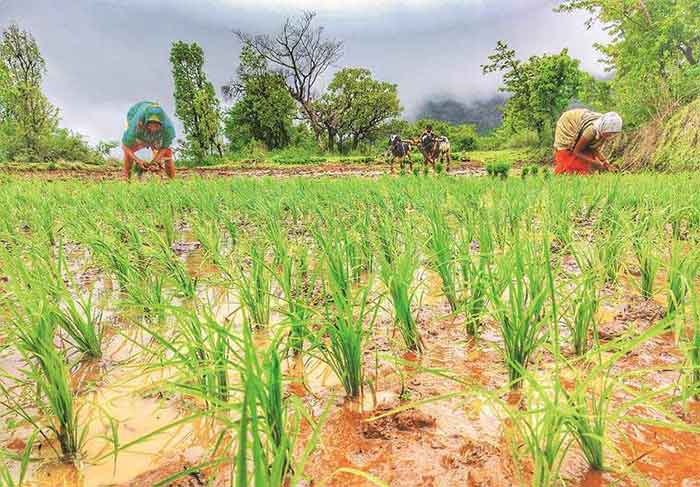
From many parts of world there have been disturbing reports of not only increasing distress of farmers but also small and medium farmers being pushed towards loss of land and livelihood. At the same time that their numbers are increasing, the livelihood problems of rural landless people are increasing in many contexts, worsening further in Covid times.
A huge question before us is—given the increasing weather uncertainties and extremes, more water stress and disasters in times of climate change, will this livelihood crisis not worsen further in the near future? And if farmers are in deep trouble, then won’t this affect the food security very adversely in several ways?
This is why it is extremely important to plan carefully for a development path which can ensure sustainable livelihoods for farmers as well as landless households, while at the same reorienting agriculture to provide adequate healthy food and contribute a lot to checking climate change. Fortunately it is still possible to simultaneously achieve all these objectives. For this the following plan of action is needed.
Farming has to be based on social agro-ecology approach. This implies use of ecologically protective methods on farming which protect soil, conserve water and moisture, protect all farmer-friendly forms of life including pollinators and those who help to create and enhance organic content of soil. This needs to be achieved by minimizing external and ecologically disruptive inputs, while optimizing local ecologically protective resources, creating self-reliant and very low-cost farming systems. There should be emphasis on providing more green cover of indigenous plants, trees and grasses (including indigenous, local, diverse crop-varieties), with great emphasis on protecting and re-generating pastures and natural mixed forests and protecting as well as increasing groves, orchards and pathways of indigenous mixed trees.
Much higher economic resources should be available for farms, pastures and forests and these should all reach rural communities directly for ecologically protective, sustainable livelihood activities which also contribute much to reducing climate change and adapting to climate change. In addition a very substantial fund for such climate change checking activities should be established internationally and the bulk of it should be meant for rural communities of poorer countries of global south which suffered historical injustice ( including India of course) which are committed to this ecologically protective development path. Hence very adequate resources can be ensured for these rural communities.
This can be used to support farmers who take up ecologically protective farming in such a way that, firstly, very fair economic returns are assured to all farmers for the safe and healthy food ( or other crops like cotton ) produced by them in ecologically protective ways, and secondly, to assure some basic support to farmers in times of very adverse weather and disaster situations.
Attempts should be made to find at least small plots of farmland for the landless ( for example by imposing ceilings on farmland, by reclaiming cultivable land, or by finding land for raising indigenous mixed trees ). At the same time, the landless should get the most opportunities in the wider greening efforts, including regeneration of degraded pastures, forests and groves, with substantial allocations reserved for this. These initiatives , although more centered on increasing green cover, can have smaller components of farming, dairying etc. as well to add to livelihood support for the landless.
Food processing should be very substantially in the hands of rural communities, led by women and traditional communities involved in this work. This as well as public health, public education, information sectors, crafts and arts plus eco-friendly tourism should get a big boost in rural areas, leading to more diversified rural livelihoods .
Thus with more such understanding and help, rural communities can protect their livelihoods well and at the same time ensure safe food to the world in difficult times, while also contributing much to checking and reducing climate change.
The main problem is that there are very powerful forces which not only hinder such progress but in addition, by imposing with increasing force their narrow agenda of huge profits and dominance, are pushing in the entirely opposite direction of ecological ruin and disruption of farm and food systems.
This is where the biggest challenge is. As far as what needs to be done , a democratic and well-informed dialogue can easily identify the path ahead, but the dominance of very powerful forces hinders this, and hence the task becomes much more difficult. This is where we stand today, at the crossroads of potential of very great improvements which, with some help, rural communities can bring, and the very big disruptions which very powerful forces seem bent on unleashing.
Bharat Dogra is a journalist and author. His recent books include Man over Machine and Protecting Earth for Children.
GET COUNTERCURRENTS DAILY NEWSLETTER STRAIGHT TO YOUR INBOX















































